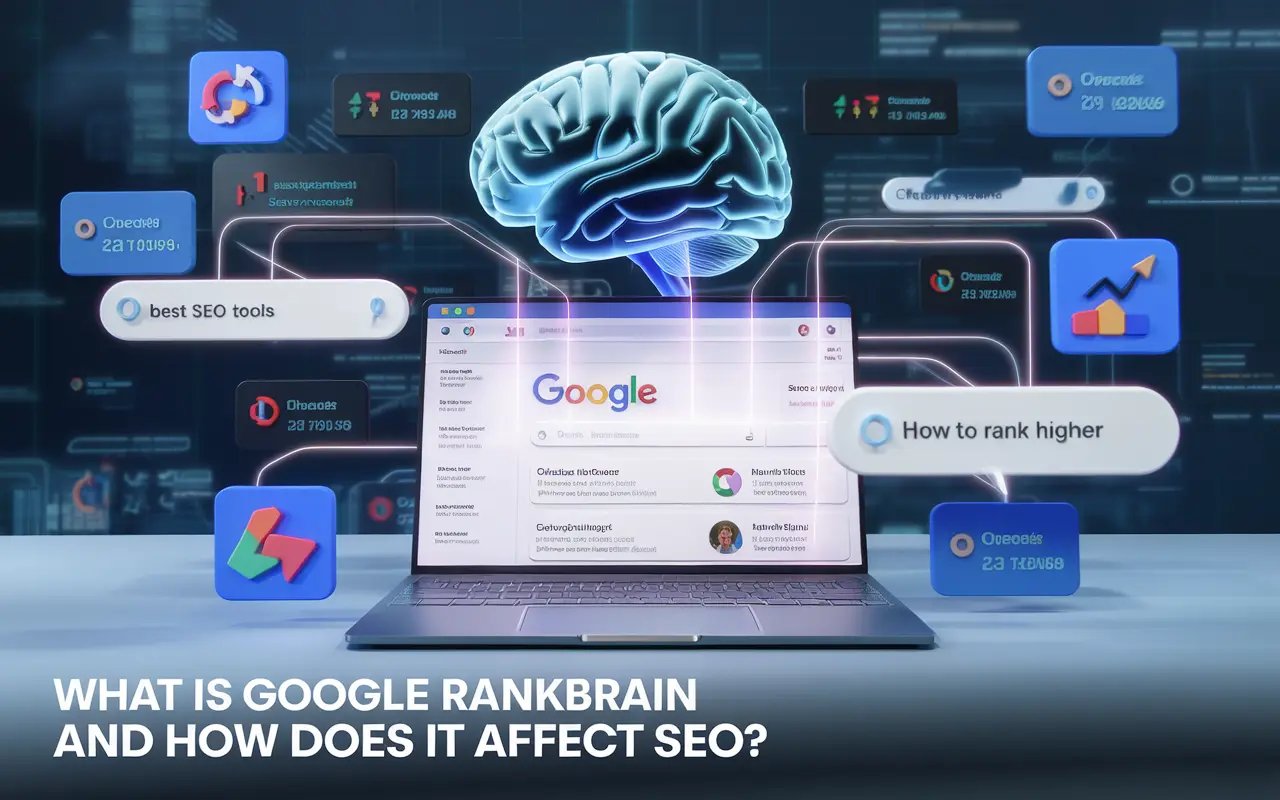Understanding Google RankBrain: The AI Behind Smarter Search Rankings
Google RankBrain is a machine learning-based component of Google’s core algorithm, designed to better understand and interpret user queries—especially ambiguous or unfamiliar ones. Introduced in 2015, RankBrain helps Google process search results more intelligently and refine rankings by evaluating how users interact with them. It’s not just about matching keywords anymore—RankBrain evaluates meaning, context, and user behavior to deliver more relevant results.
In the world of SEO services, understanding and optimizing for RankBrain can significantly improve how your content ranks in Search Engine Results Pages (SERPs). By focusing on relevance, user intent, and engagement metrics, RankBrain aligns closely with modern SEO strategies that emphasize content quality and user experience.
Key Takeaway
Google RankBrain interprets user intent and behavior to deliver more relevant search results, making user-focused content and engagement crucial for SEO success.
Why Google RankBrain Is Crucial for SEO Success
RankBrain plays a critical role in how Google ranks pages, especially for queries that are complex or never searched before. Unlike traditional algorithms that rely heavily on keyword matching, RankBrain uses AI to infer what users actually mean and ranks content based on how well it satisfies that intent. Here’s why this matters for SEO:
- Enhanced Relevance: Sites that offer informative, user-centric content fare better under RankBrain.
- Better Engagement: It tracks metrics like CTR and dwell time to determine if results are satisfying users.
- Semantic Matching: Even if the exact keyword isn’t used, content that addresses a user’s intent can rank highly.
For business growth, this means websites must create valuable, engaging, and intent-matching content to outperform competitors. Leveraging RankBrain can help boost organic traffic, increase conversions, and improve digital visibility.
Best Practices to Optimize for Google RankBrain
RankBrain doesn’t work like traditional ranking signals, making it harder to “optimize” in the old-fashioned way. That said, adhering to best practices that align with user experience and relevancy can significantly improve your rankings:
- Focus on Search Intent: Understand whether your audience is looking for information, navigation, or a transaction—and answer accordingly.
- Write in Natural Language: Use conversational content that mirrors how users actually speak and search.
- Improve Dwell Time: Create compelling intros, readable layouts, and multimedia to keep users engaged.
- Use Long-Tail Keywords: Integrate phrases that reflect natural user queries rather than short, vague keywords.
- Optimize for Featured Snippets: Use lists, headings, and clear formatting to increase chances of being displayed in position zero.
How RankBrain Works in Google’s Algorithmic Ecosystem
RankBrain acts as an interpretive layer in Google’s search algorithm. It helps Google make educated guesses about user queries by using patterns from historical search data.
Query Interpretation and Context Matching
When a search query is ambiguous or complex, RankBrain uses machine learning to find words or phrases with similar meanings and then filters the results accordingly. This improves the search engine’s ability to display relevant pages, even for previously unseen queries.
User Satisfaction Metrics
RankBrain monitors user interaction signals like:
- Click-through rate (CTR)
- Bounce rate
- Dwell time
- Return-to-SERP behavior
If users quickly return to the search results, Google may determine the page did not satisfy their intent, affecting its future rankings.
| Signal | How RankBrain Uses It |
|---|---|
| Click-Through Rate | Measures if users find the title/description attractive. |
| Dwell Time | Assesses how valuable users find the content. |
| Bounce Rate | High bounce suggests content may not match intent. |
Case Study: RankBrain Optimization Leads to 42% Increase in Organic Traffic
Problem: Low Engagement Despite High Content Volume
A B2B SaaS company was publishing regular blog content but seeing minimal growth in organic traffic. Despite covering relevant keywords, they struggled to rank for competitive search terms and experienced high bounce rates.
Solution: Intent-Focused Content and Engagement Boost
We performed an audit and revised the content to better match user intent. Articles were rewritten in a conversational tone, structured with clear headings, and optimized for CTR using compelling meta descriptions. We also added internal links and improved page UX to increase dwell time.
Results: Higher Rankings and Increased Engagement
Within 4 months, the site experienced a 42% increase in organic search traffic, a 28% improvement in dwell time, and multiple blog posts ranked in the top 5 positions for high-volume queries.
Common Mistakes to Avoid When Optimizing for RankBrain
- Keyword Stuffing: RankBrain interprets meaning, not exact keyword repetition. Overuse can harm rankings.
- Ignoring Intent: Writing generic content without aligning it with user needs won’t perform well.
- Poor UX: If users bounce quickly due to poor design or popups, RankBrain may downrank the page.
- Over-Optimization for Bots Not Humans: Focus on real value for users, not artificial signals.
Related Terms and Concepts
- Semantic Search: Enhances search accuracy by understanding natural language and context.
- User Intent: Refers to the reason behind a user’s search query.
- Dwell Time: The amount of time a user spends on a page before returning to search results.
FAQs About Google RankBrain and SEO
Google RankBrain is an AI-based search algorithm that helps Google better understand search queries and user behavior to display more relevant results.
Yes, RankBrain is an integral part of Google’s core algorithm and continues to influence how search queries are interpreted and ranked.
No, RankBrain optimization is indirect. Focus on high-quality, intent-driven content that satisfies user queries effectively.
RankBrain evaluates user signals like engagement and satisfaction, which affect how your page ranks in SERPs over time.
Conclusion: Embracing RankBrain for Smarter SEO Results
Understanding and optimizing for Google RankBrain means shifting your SEO strategy from keyword-centric to intent-focused and user-driven. It empowers businesses to create impactful content that resonates with their audience and pleases Google’s algorithm. To thrive in modern search landscapes, align your content with what users truly want—and let RankBrain do the rest.
Looking to optimize your SEO with advanced strategies? Explore our complete SEO guide here to get started.






